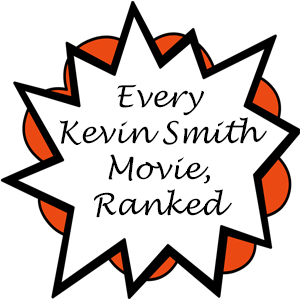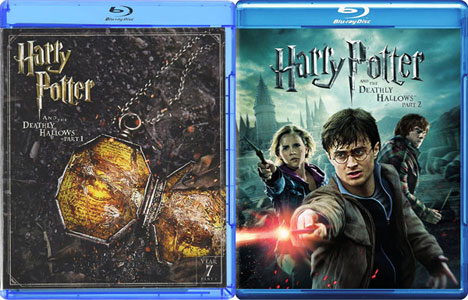My series looking back at the “Harry Potter” films continues with Year 7, “Harry Potter and the Deathly Hallows, Parts 1 and 2” (2010-11):
WHY IT’S GREAT
If the ultimate goal of a film is to make a viewer feel something, “Deathly Hallows” – a 4.5-hour epic if you watch the two parts as one movie, as I did on this viewing – achieves it. Made by the established team of director David Yates and screenwriter Steve Kloves, “Part 1” feels like what my RFMC colleague Michael calls a “Gandhi Film.” It’s artistically great, but it doesn’t make you want to watch it again.
We wallow in Harry, Hermione and Ron’s collective misery as they are driven into the wilderness of god-knows-where to avoid being killed by the new governmental regime of Death Eaters. It mirrors many wartime sagas. But it’s satisfying to see the trio’s skills come to bear, and the energy picks up considerably in “Part 2” when the action returns to good ol’ Hogwarts. “Deathly Hallows” is exhausting, but as a robust chronicle of taking back your society from an evil regime, I suppose it has to be.
WHY IT’S NOT SO GREAT
Especially watching it on the heels of the super-fun “Half-Blood Prince,” “Deathly Hallows” is a massive downer. When Ron storms off, citing the trio’s utter lack of progress in finding and destroying Horcruxes, I shamefully admit I sympathize with him – and I don’t think we’re supposed to. At times I wonder why J.K. Rowling had to invent six Horcruxes (plus Voldemort himself). Why not, say, a more manageable three? So, yeah, “Deathly Hallows” feels as long as its running time. Despite this, Kloves still leaves some things unclear for the theoretical person who hasn’t read the book, such as Harry’s mirror shard and the fact that saying the name “Voldemort” draws Death Eaters.
BEST YOUNG CHARACTER AND ACTOR
Neville Longbottom (Matthew Lewis). As Harry (reluctantly) embraces his Chosen One status, Neville steps up as an Everyteen for the rest of us to relate to. His character arc happens in the margins, but it’s nonetheless satisfying to see his transition from the chubby klutz into a strapping lad who fronts Dumbledore’s Army off screen stands up to Voldemort on screen. He has decided there are things worth fighting for, even if it means his death.
BEST ADULT CHARACTER AND ACTOR
Professor McGonagall (Maggie Smith). She had been the consummate strict teacher who earned (rather than demanded) respect from her charges, but McGonagall gets to be more openly cool in this final installment. She takes on Snape and calls him a coward when he flees, then activates Hogwarts’ statue guardians and admits she’d always wanted to do that spell.
BEST MOVIE MAGIC
Too often, final battles in blockbuster movies are overblown and even hard to watch. “Deathly Hallows” doesn’t fall into that trap. The filmmakers deliver great moments like the curses exploding against the shield, the Death Eater-filled bridge collapsing, and giants lumbering onto the Hogwarts grounds. But it’s played with the right tone – I particularly like how the score is somber and subtle – and it feels compelling rather than obligatory. Harry’s side trip to the white room, where he converses with Dumbledore, is both a breather from the action and one of the series’ most emotional scenes.

BEST COMEDIC BIT
After Ron destroys the locket Horcrux with the Sword of Gryffindor, things are lightening up a bit, although Hermione is stewing over Ron’s behavior. Then Harry absently toys around with an “Engorgio” spell, the magic flame on the table massively enlarges, and he quickly shouts “Reducio!” It’s a snort-worthy gag, and it gives us permission to laugh again. From this point forward, “Harry Potter” has a measure of fun again.
BEST DRAMATIC BIT
In a Pensieve sequence that poignantly happens after Snape’s death, we see how his childhood crush on Lily carried throughout his life, even after Lily chooses James. For Rowling to romanticize Snape’s unrequited love as something heroic is a brave storytelling choice, and it adds to the complex arc of Snape, whose place on the Good-Evil Meter is still hard to position today.
WHERE IT RANKS
“Deathly Hallows” is different from the first six films, both in length and the fact that its plot structure doesn’t follow a school year. Instead, Harry, Hermione and Ron search for Horcruxes seemingly forever, and when they do return to Hogwarts, it’s to fight a massive battle. It’s cool to end the saga in such an epic fashion, but it also makes me long for the comfort of the first six movies. The filmmaking behind “Deathly Hallows” is often wondrous to behold, but sometimes plodding and maybe even confusing for those who don’t know the book inside out. Ultimately, it ranks in the middle of the pack.
After this viewing session, my ranking of the “Harry Potter” movies is: 6, 3, 5, 2, 7, 4, 1.
Book review: “Deathly Hallows”
Next movie: “Fantastic Beasts and Where to Find Them”

